The Olympics bring excitement and promise. Host cities invest billions and billions of dollars to create arenas, stadiums and villages. But what happens to these structures after the Olympics end? Take a look at this sad testament to spending without planning.
1. Sarajevo
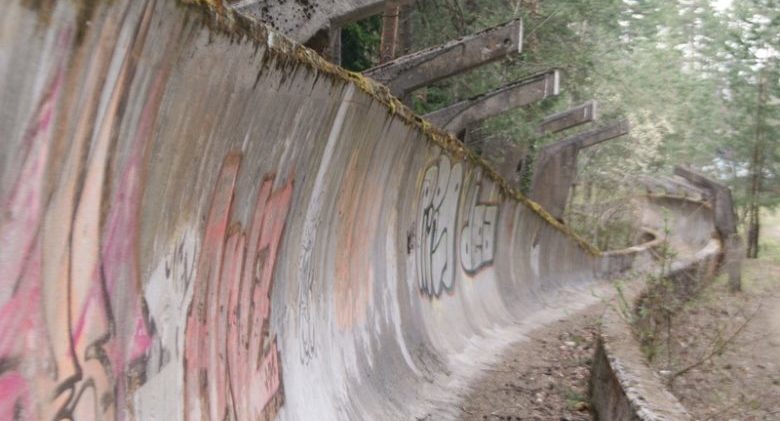
The 1984 Winter Olympics in Sarajevo brought excitement and unity to a region that was about to undergo major upheaval and a civil war. Between February 9 – 12, this bobsled and luge track at Mt. Trebević was an ice-covered hot spot. 50,000 spectators came to watch East Germany capture four medals in luge and four medals in the bobsled, including both bobsled golds. However…
2. Bobsled Track/Sniper Nest
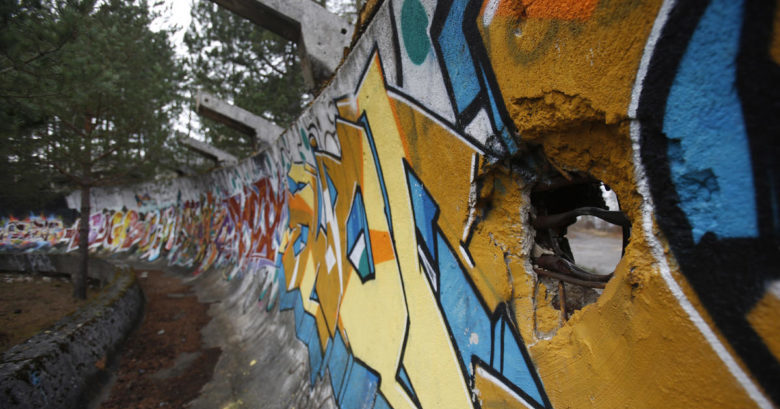
When war broke out eight years later, the track became a strategic defense point for Bosnian Serb fighters. You can see the sniper hole with the concrete track serving as a shield…and an artillery stronghold. Sarajevo was under siege for six years. The Olympic venues became battlegrounds, bullet holes riddling the once-famous platforms. This graffiti covered concrete track an eerie reminder of the wonderful winter of ’84.
3. Ski Jumps Of Sarajevo
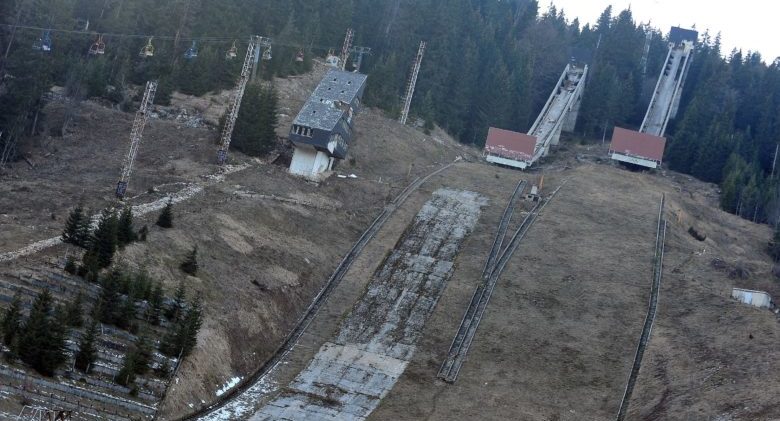
The Igman Olympic Jumps on Malo Polje were also areas of heavy fighting. Eight years earlier, at the 14th Winter Olympic Games, excitement, enthusiasm and the promise of medals draped around necks prevailed on these hills. Pictured here are the sad vestiges of those days in the form of the skeletal jumping towers.
4. Makeshift Cemetery
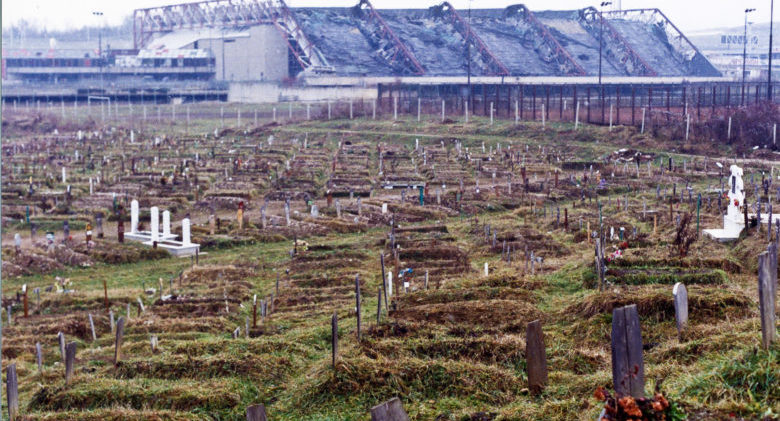
The siege, snipers and shelling took their toll on the local population. The 10,000 casualties led to impromptu graveyards in parks, athletic fields and other open spaces, including the Olympic sports complex area pictured here. This macabre image is a far cry from the life and vitality that resounded in this field just under a decade earlier. Next, Athens…
5. Athens
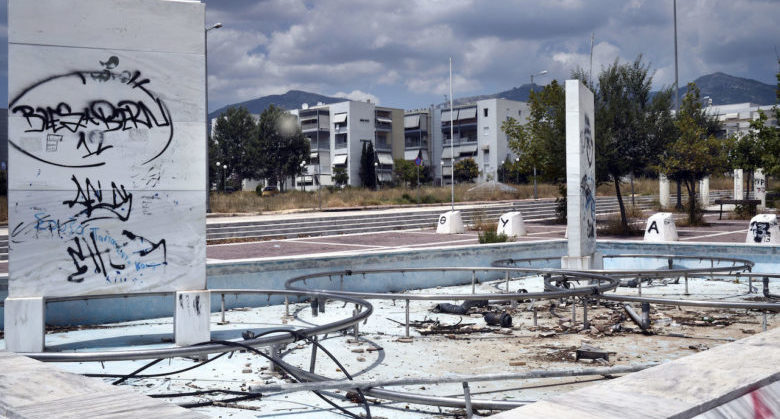
Dubbed the Unforgettable Dream Games by the President of the International Olympics Committee, the 2004 Games saw the return of the Olympics to Athens in just shy of century. Pictured here are the remains of the Olympic fountain. The Greek organizers invested 9 billion Euros ($11 billion USD), renovating existing structures and building new ones for the Games.
6. Canoe and Kayak Slalom
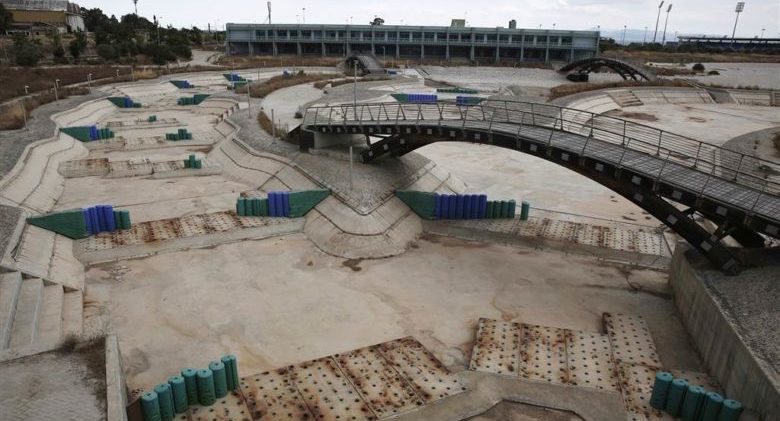
7. Diving Tank
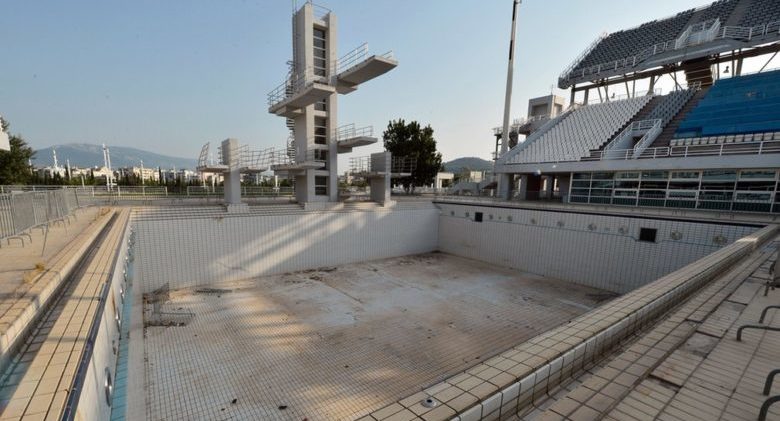
The Olympic Aquatic Centre was constructed for the 1991 Mediterranean Games. It was refurbished and expanded for the Summer Olympics. Eight years after the ’04 Games, the water was drained and the decrepit shell remains. The adjacent “olympic” size pool is still in use, next to this eyesore that was one of the stages for water athletes in 2004.
8. The Softball Stadium
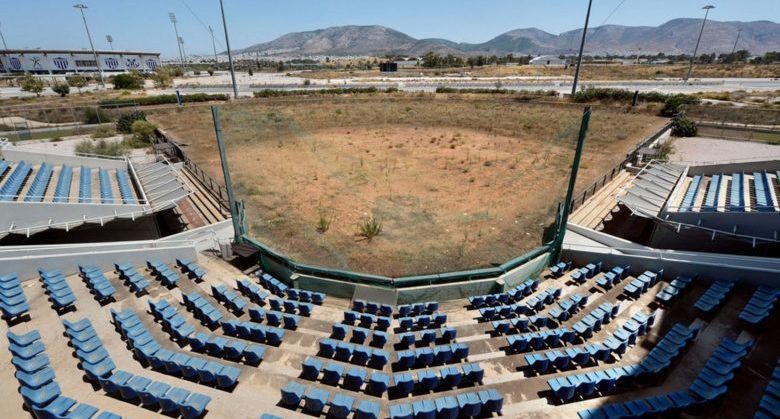
The Games cost Greece almost twice their projected budget. One reason is the organizers opted to build permanent structures, unlike prior host cities that used existing infrastructure or constructed temporary, collapsible venues. “The Games were a lost opportunity, no doubt about it,” says the former Athens 2004 spokesman, Stratos Safioleas. The softball stadium at the Helliniko Olympic complex is one example.
9. Beach Volleyball In Athens
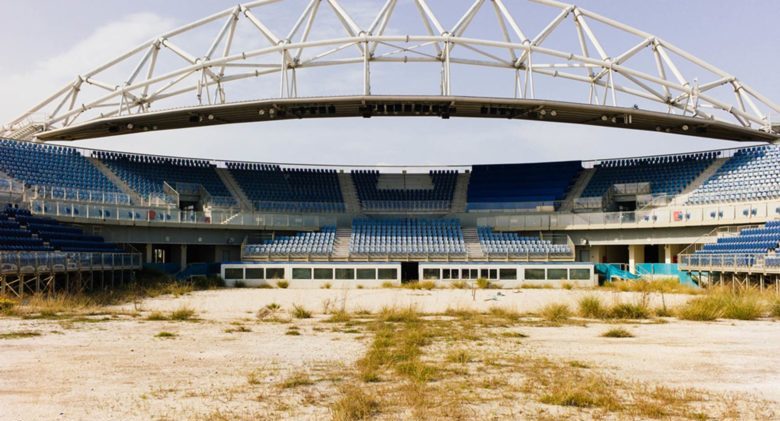
The Faliro Coastal Zone Olympic Sports Complex consisted of two indoor arenas and a beach volleyball stadium. For the men, Brazil won the gold. For the women, the U.S. took the top medallion. Athens, however, got the short end of the stick, stuck with a structure that had little value after the 17 days of games. Former Olympic weightlifting champion, Pyrros Dimas, and now member of Parliament, said, “We switched off, locked up the stadiums, let them fall to pieces, and everything finished there.”
10. Beach Volleyball in Beijing

In 2008’s Summer Olympics in Beijing, beach volleyball was played here. Other venues during the 2008 Games like the “Bird’s Nest,” and the National Aquatics Center, a.k.a. “Water Cube,” are now used for cultural and sporting events. However, the rowing and kayaking slalom, the baseball field, and the arena pictured have been demolished…or deserted.
11. Berlin
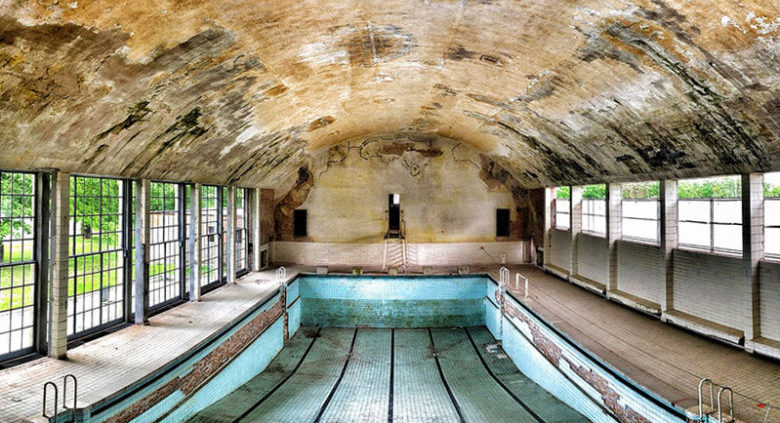
The 1936 Olympics were in Berlin, Germany, a venue, like Sarajevo, that was less than a decade from war. This indoor pool in the Olympic Village in Elstal, Germany, allowed swimmers and divers to practice. Japan and the Netherlands were the big winners in the water at these Games, each taking four gold medals, Japan capturing 11 overall. This pool, along with other Olympic structures, were preserved until 1992 and have since been left to rot.
12. Olympic Village, Berlin
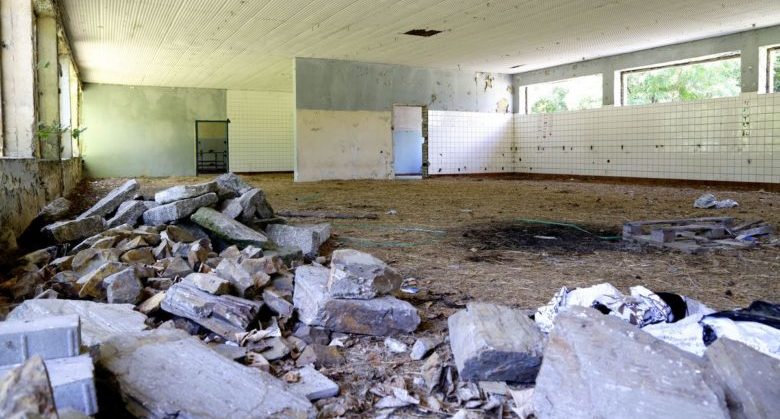
Here lie the remnants of one of the structures in the Olympic village of the 1936 Olympics. 3,600 athletes, coaches and staff used the village which was designed to outdo the Los Angeles games four years earlier. After the Olympics, the village was used as barracks for the German army. It passed to the Russian hands from 1945 until their departure in 1992.
13. Cortina d’Ampezzo, Italy
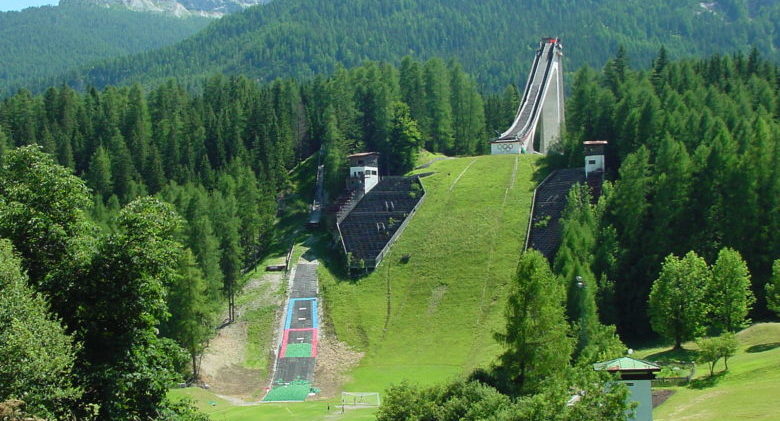
The 1956 Winter Games in Cortina d’Ampezzo, Italy, were the first to include the USSR team. The Russians dominated their debut, winning more medals than any other nation, but not on this ski jump, called “Italia.” It was reconstructed and opened the year prior to the VII Olympics. It was the most modern construction to date. Finland took the gold and silver medals, and Italia remained in use until 1990.
14. Grenoble, France
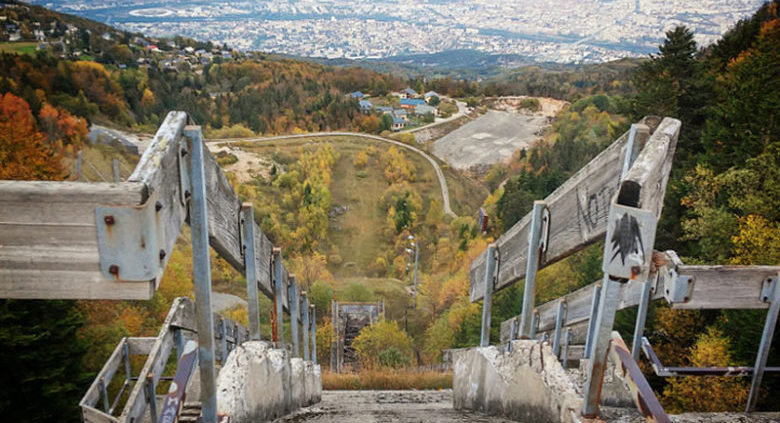
This grass and tree covered ski jump tower in Grenoble, France, is where the 100m mark was broken—twice during the 1968 Winter Olympics. The USSR’s Vladimir Belousov and Czechoslovakia’s Jiri Raska won gold and silver. These two set a new standard in the sport that has not been forgotten, unlike the tower from which they crossed that threshold.
15. Sochi

The 40,000-capacity Fisht Stadium was constructed for the 2014 Winter Olympics in Sochi. This structure had a dual purpose; it was also meant to serve the 2014 Winter Paralympics. As for the Olympics, the stadium was the venue for the opening and closing ceremonies. However, the building will not go to waste. It is being converted into an open-air arena for the 2018 FIFA World Cup.
[Featured Image Credit:
